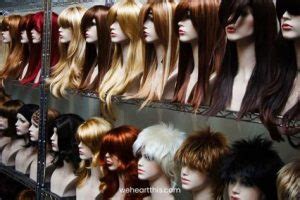It’s a Wig: A 10,000-Word Guide to the World of Hairpieces

In the world of hair fashion, wigs are a thriving industry. According to the American Hair Loss Association, over 50 million Americans experience hair loss, and the global hairpiece market is projected to reach $10 billion by 2025.
People wear wigs for various reasons:
- Hair loss: Medical conditions, genetics, and aging can all lead to hair loss. Wigs offer a convenient and realistic solution to restore volume and confidence.
- Styling versatility: Wigs allow wearers to experiment with different hairstyles, colors, and textures without damaging their natural hair.
- Cultural and religious reasons: In some cultures and religions, wigs are worn as a sign of tradition or modesty.
- Medical treatments: Wigs can protect the scalp during chemotherapy and other medical treatments that cause hair loss.
There are many different types of wigs available, each with its own unique benefits and drawbacks.
Conventional Wigs
- Lace front wigs: These wigs have a sheer lace base that creates a natural-looking hairline. They are often more expensive than other types of wigs.
- Monofilament wigs: These wigs have a thin, breathable base that simulates the scalp. They are lightweight and offer maximum comfort.
- Synthetic wigs: These wigs are made from artificial fibers, such as nylon or polyester. They are generally less expensive and easier to maintain than human hair wigs.
- Human hair wigs: These wigs are made from real human hair. They offer a realistic look and feel, but they are more expensive and require more care.
Non-Surgical Hair Pieces
- Toppers: These pieces are designed to add volume to the top of the head. They are ideal for people with thinning hair.
- Extensions: These pieces are used to extend the length or thickness of the hair. They can be clipped in, glued on, or sewn in.
- Hair pieces: These pieces are designed to cover specific areas of hair loss, such as the crown or the bangs.
Choosing the right wig can be a daunting task. The best way to start is to consider your own needs and preferences.
- Hair loss: If you are experiencing hair loss, the type of wig you choose will depend on the cause and severity of your condition.
- Lifestyle: If you have an active lifestyle, you will need a wig that is durable and easy to maintain.
- Budget: Wigs can range in price from a few hundred dollars to several thousand dollars. It is important to set a budget before you start shopping.
Wearing a wig properly is essential to achieving a natural look. Here are a few tips:
- Prepare your hair: Wash and style your hair as usual. If you have short hair, you may want to secure it with bobby pins.
- Apply the wig cap: A wig cap helps to keep the wig in place and protects your natural hair.
- Position the wig: Center the wig on your head and adjust it until it is comfortable.
- Secure the wig: Use wig tape or clips to hold the wig in place.
- Style the wig: You can style the wig as desired using hairspray, mousse, or other styling products.
Proper care can extend the life of your wig. Here are a few tips:
- Wash the wig regularly: Wash the wig as often as needed, following the manufacturer’s instructions.
- Use a wig shampoo and conditioner: These products are specially designed to clean and condition wigs without damaging the hair.
- Avoid heat styling: Heat can damage the wig fibers. If you must use heat, use it on a low setting.
- Store the wig properly: When you are not wearing the wig, store it on a wig stand or in a wig box.
Wigs offer a versatile and convenient way to change your hairstyle, restore volume, or protect your hair during medical treatments. By following the tips in this article, you can choose and wear a wig that looks and feels natural.
